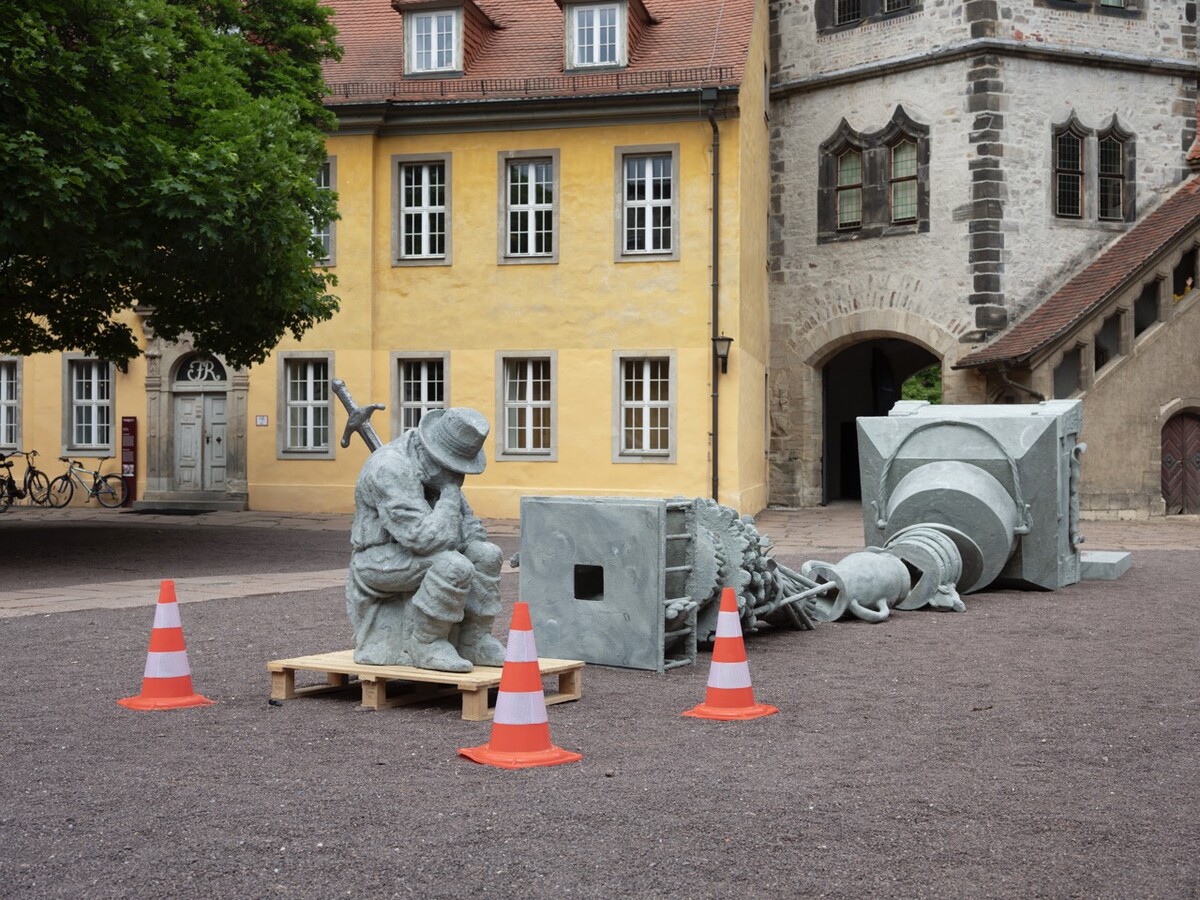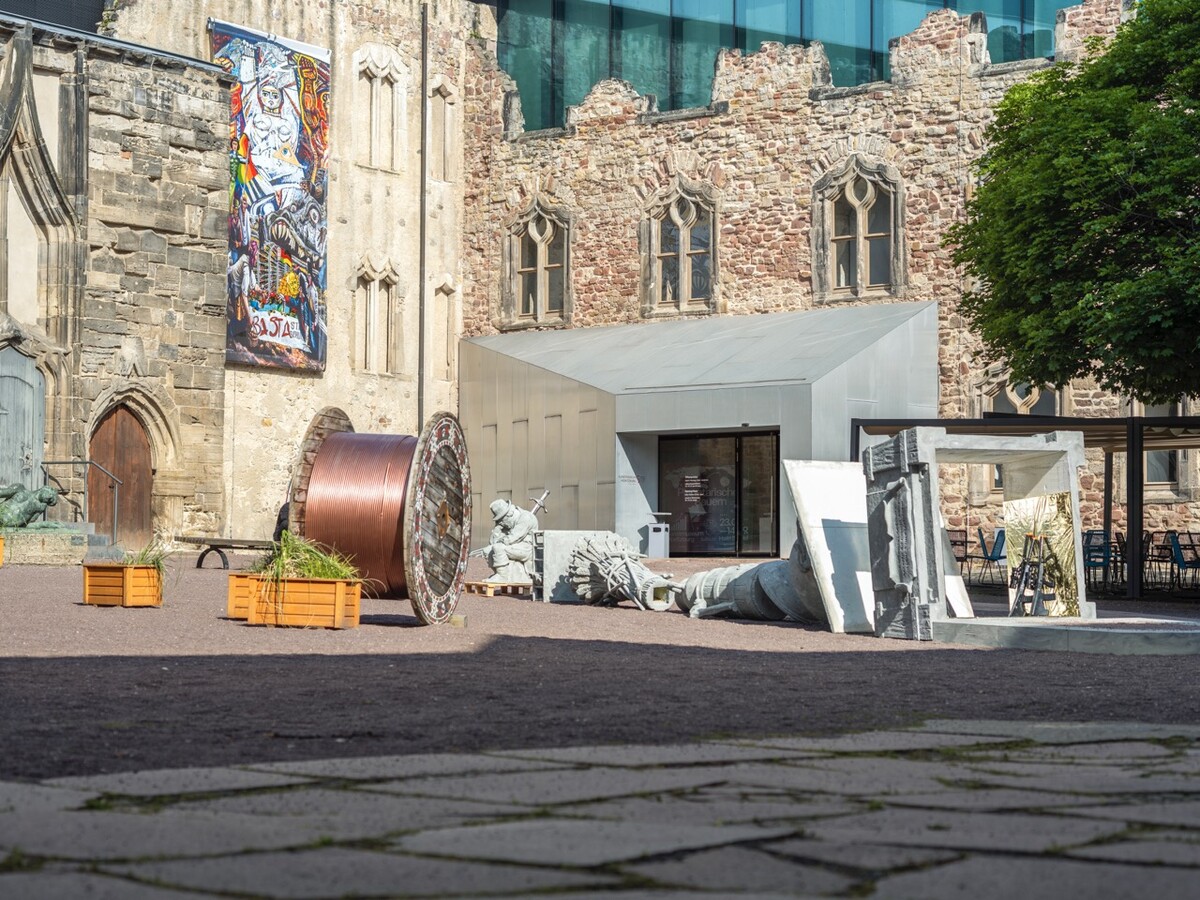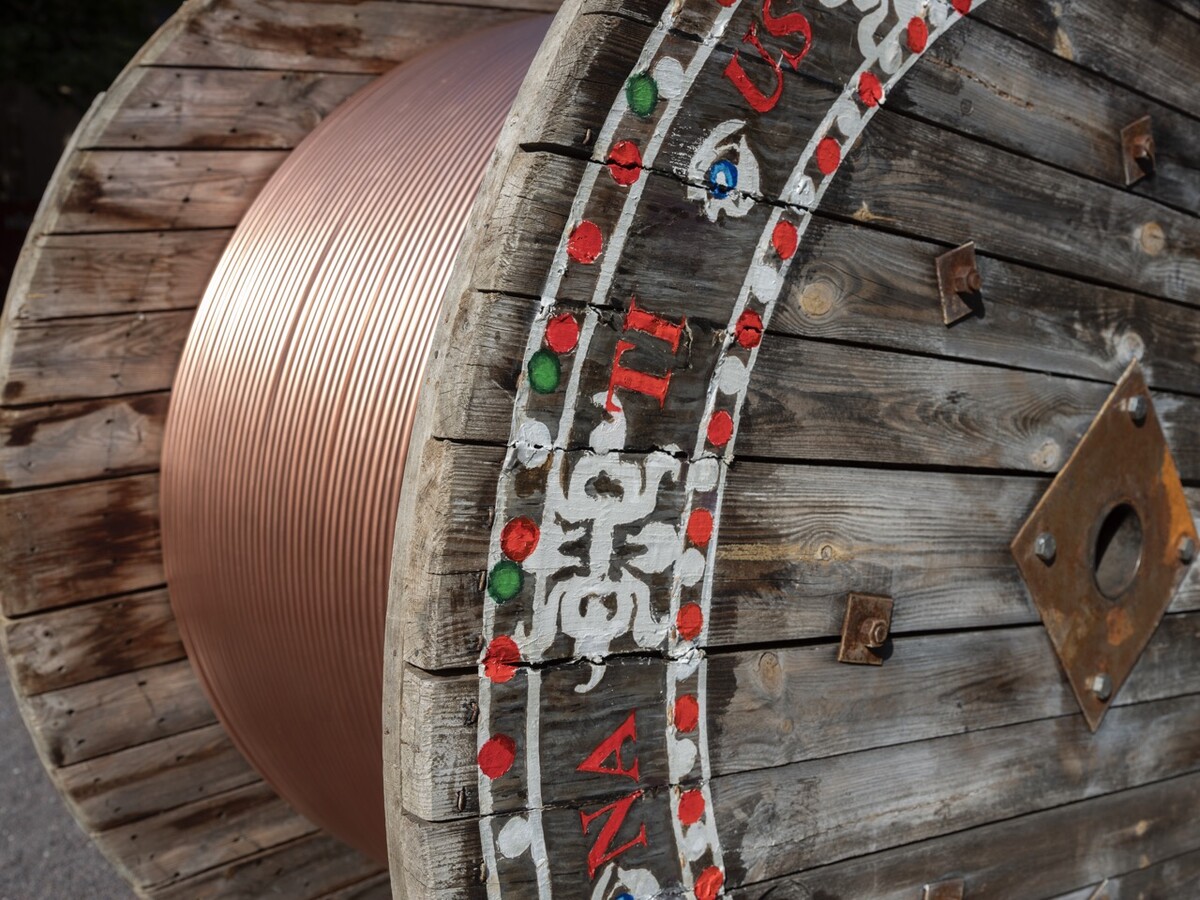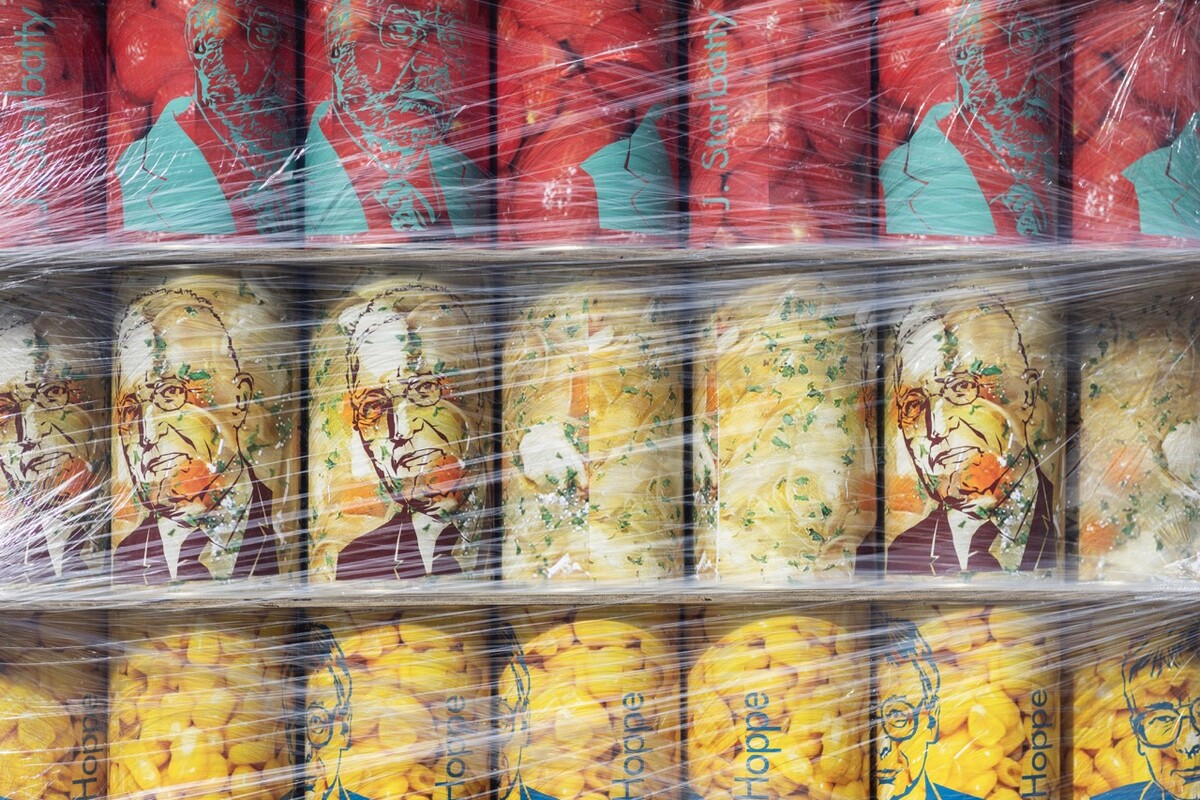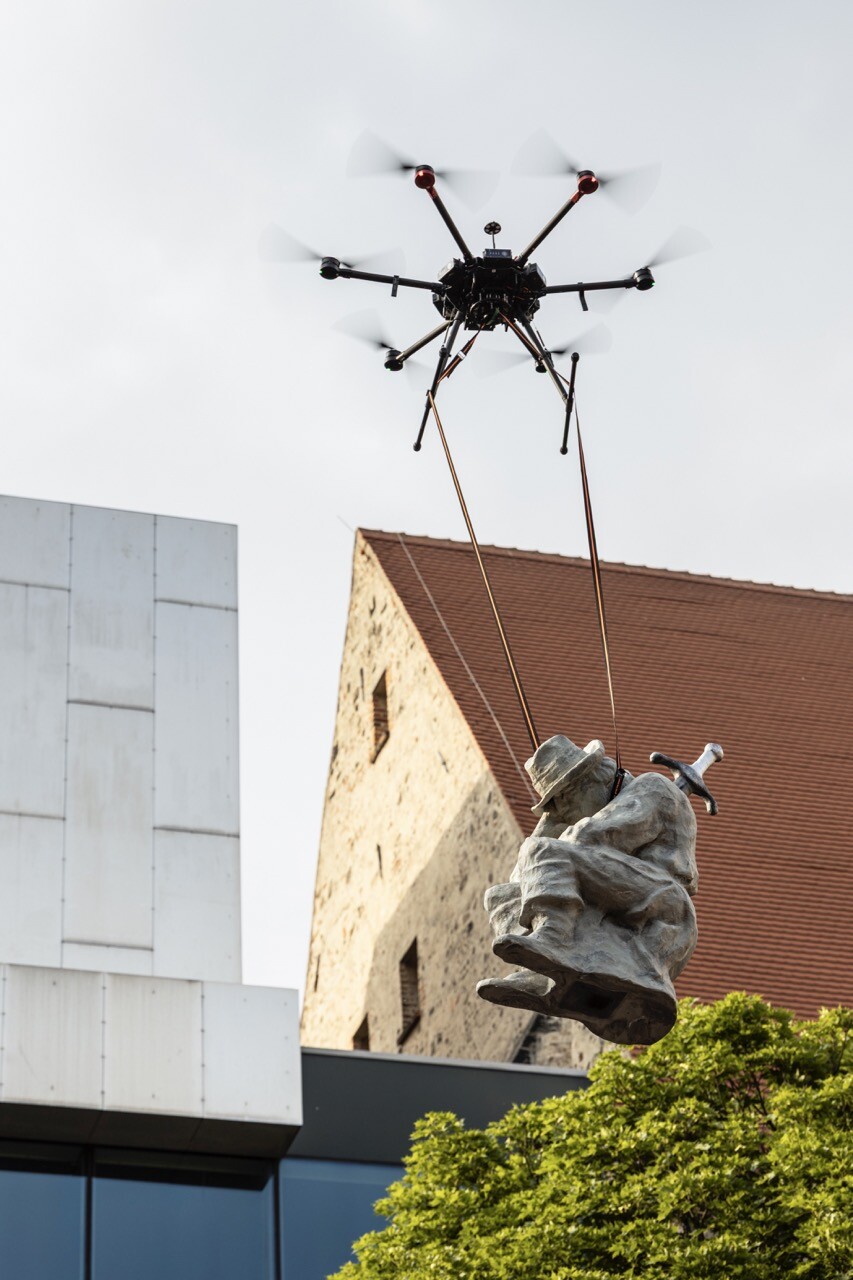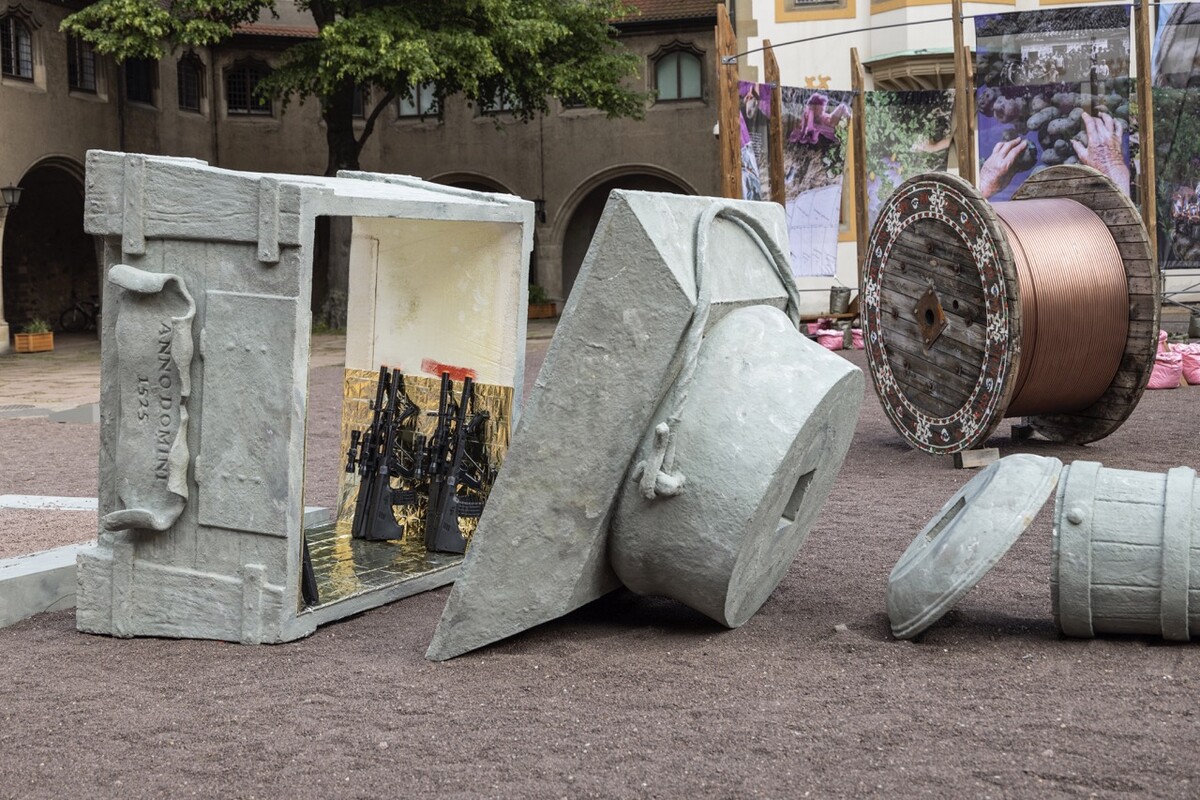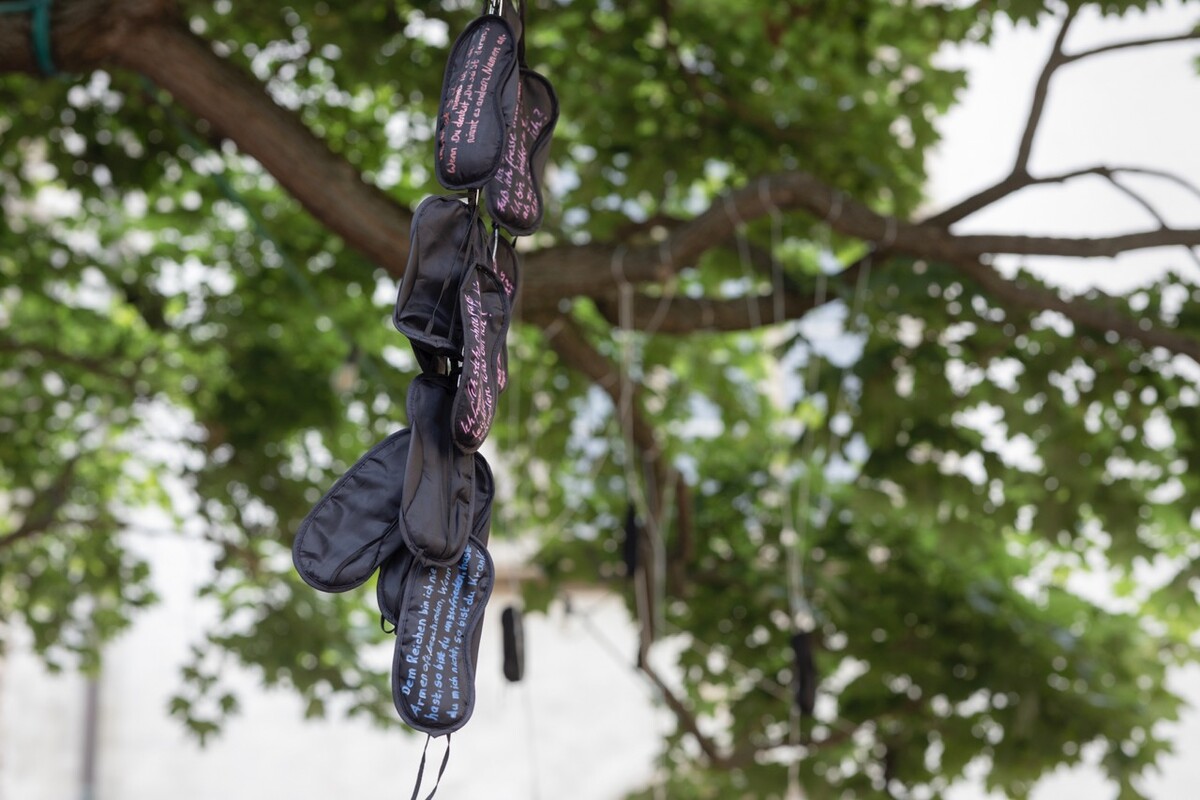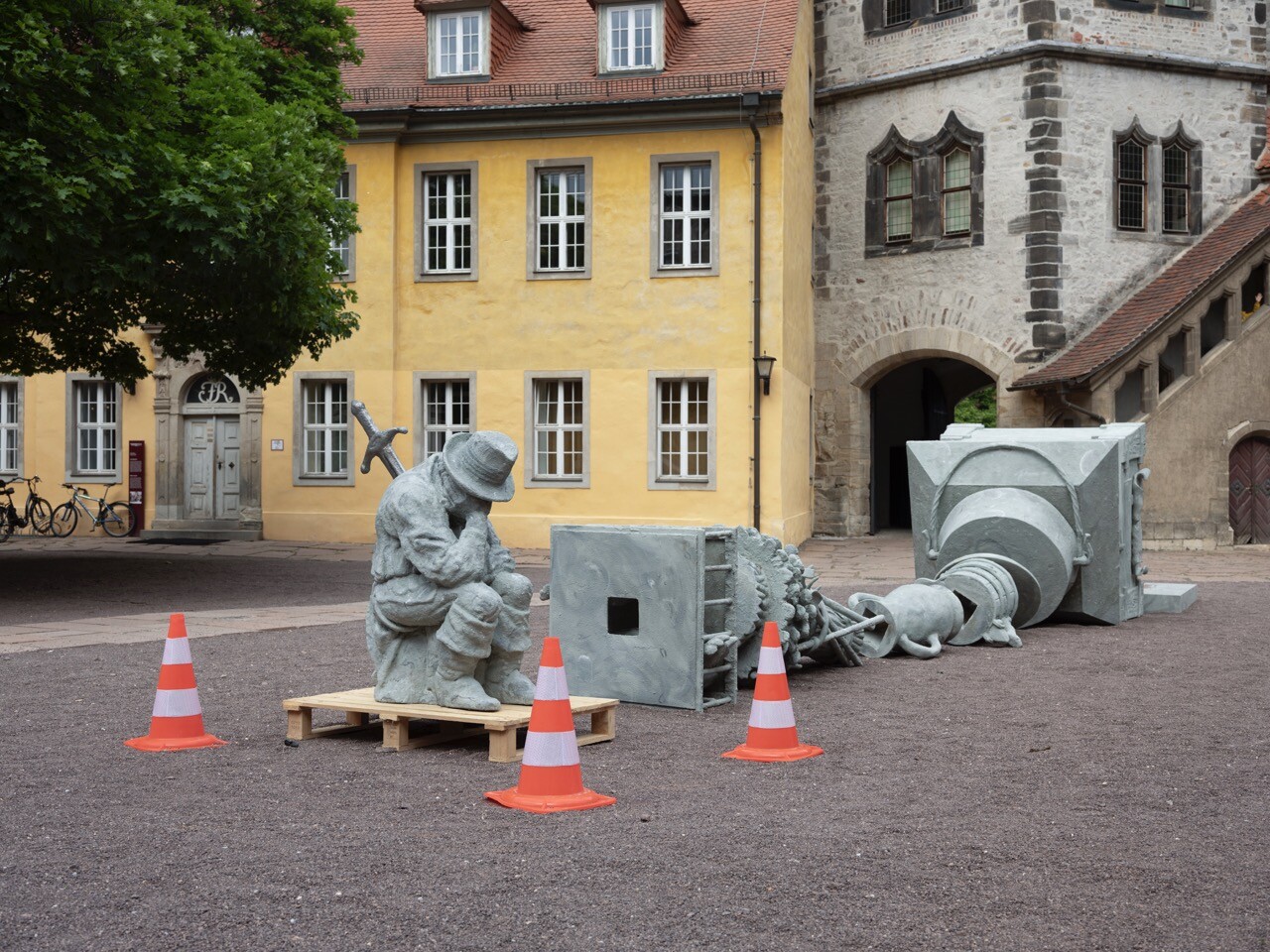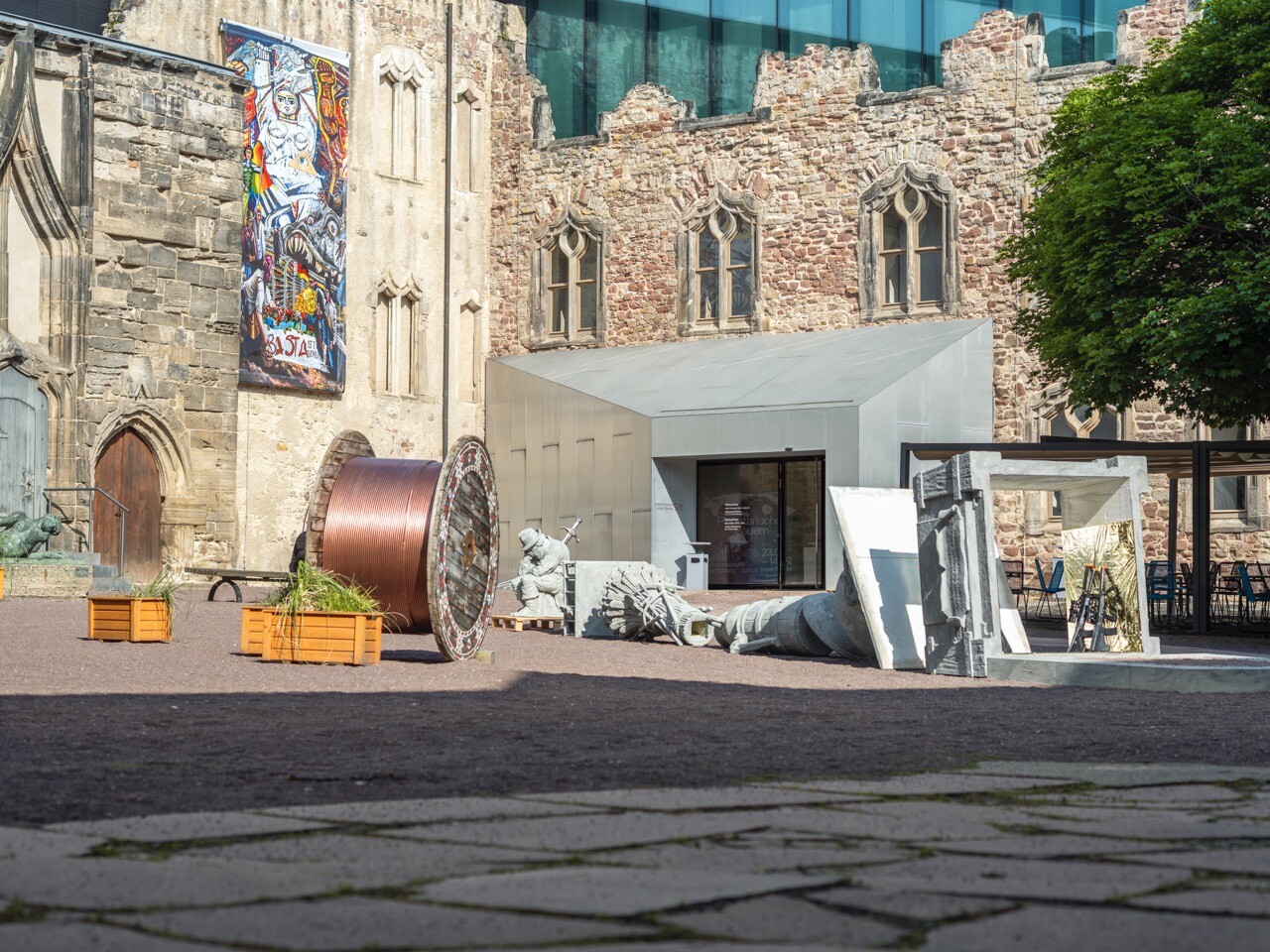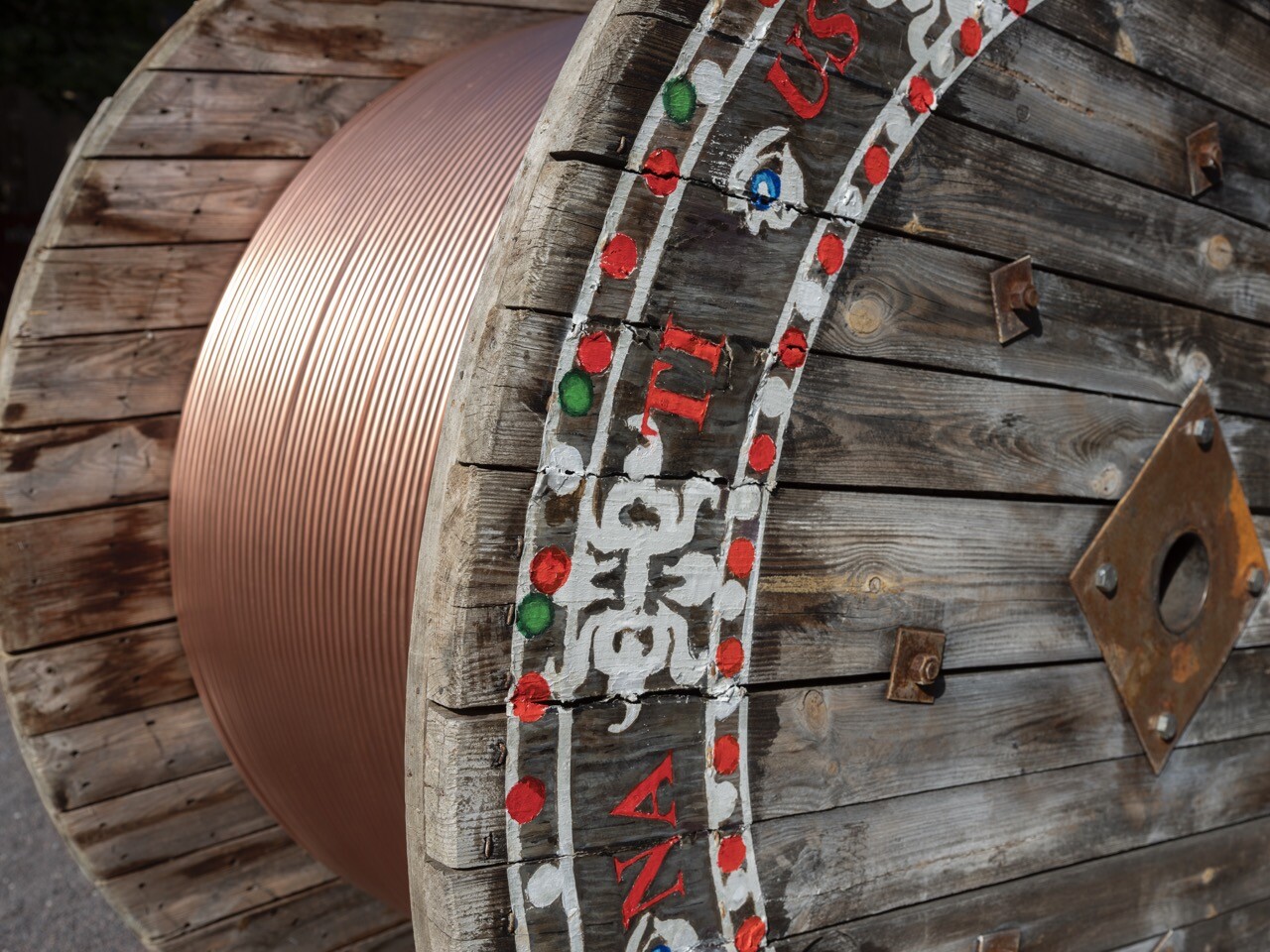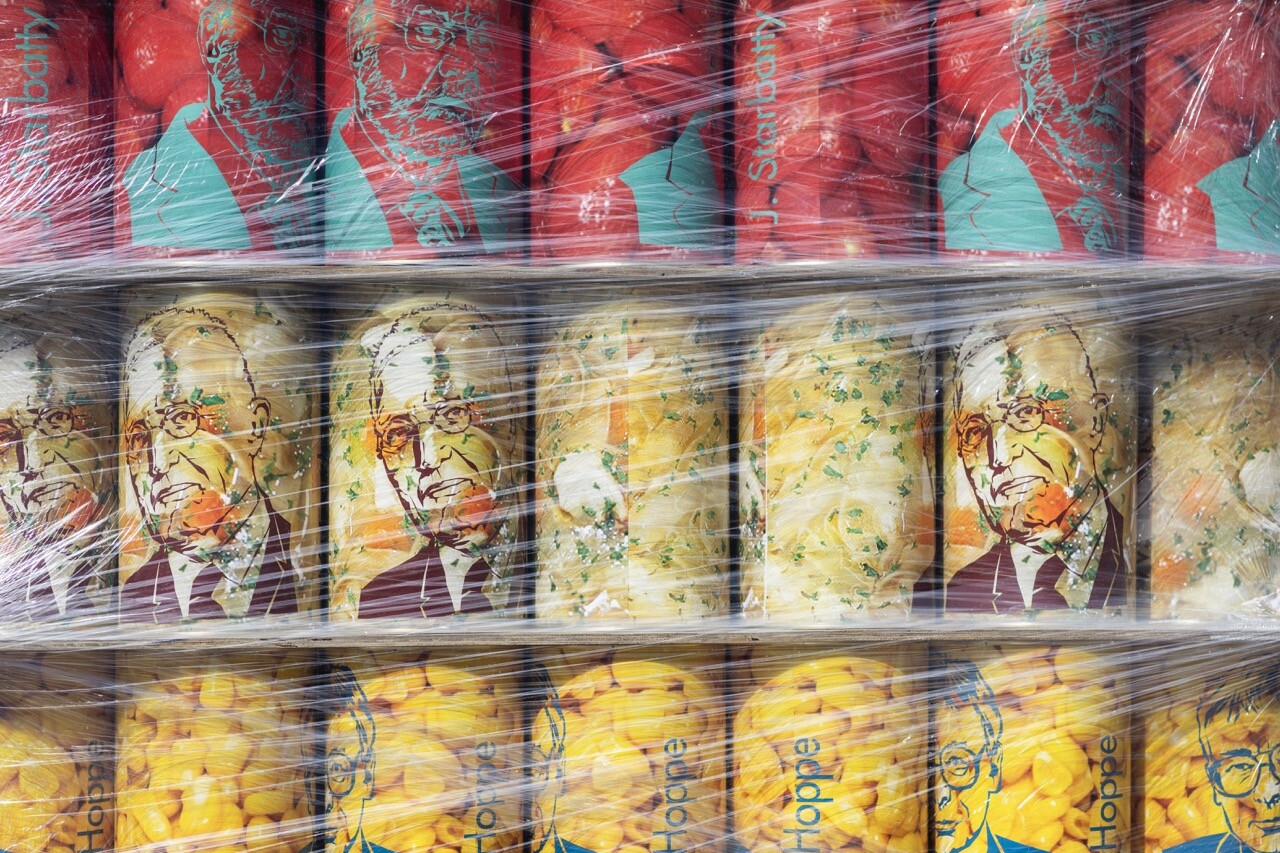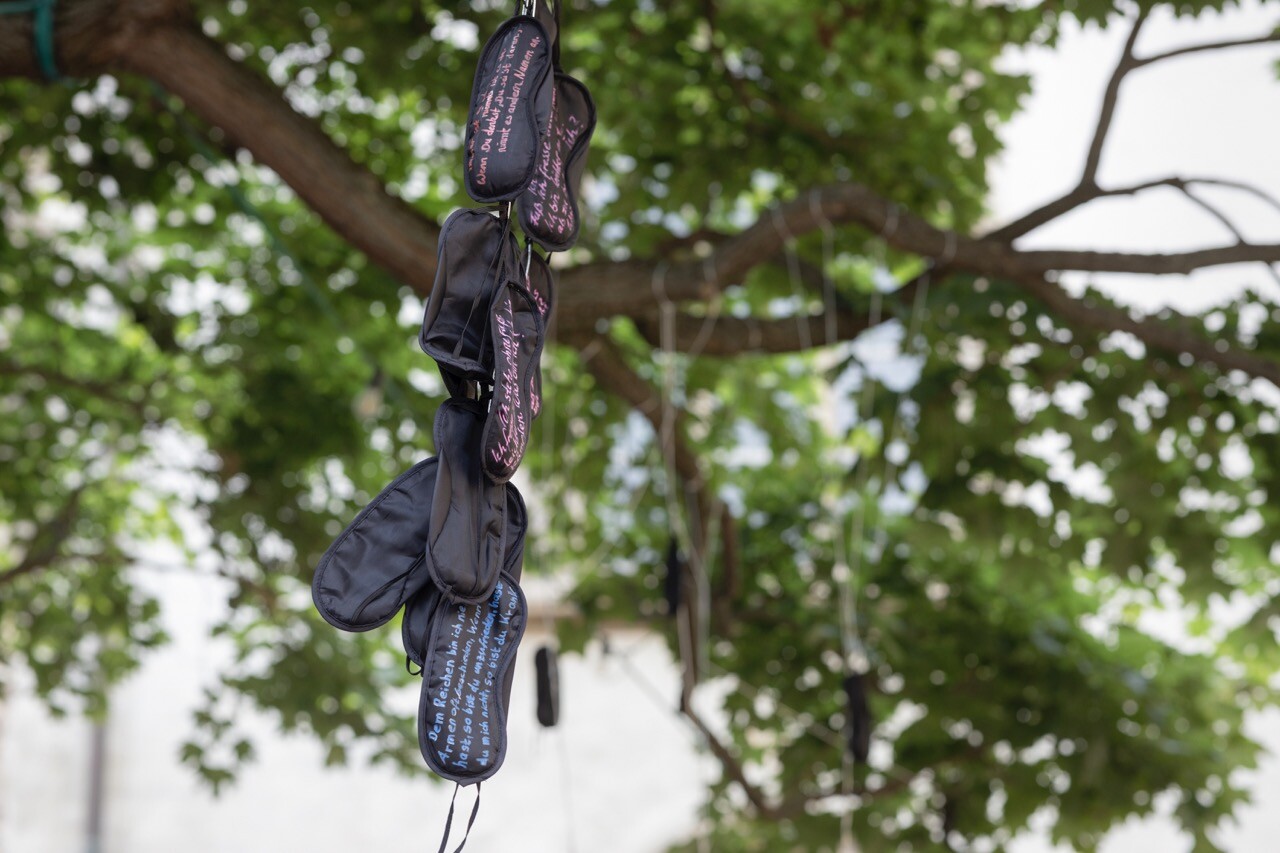Media
Fragebogen für Arbeiter:innen – Antworten aus der Landwirtschaft, 2025, installation view, 2025
© Alice Creischer / VG Bild-Kunst, Bonn 2025; photo: Michel Klehm
The artistic practice of Alice Creischer (born 1960 in Gerolstein, lives in Berlin) revolves around socio-political and economic issues. In her interdisciplinary projects, the use of text plays a primary role – not only as a medium of communication or aesthetic-linguistic artwork, but also as a visual medium in its own right. For her current project, the artist interviewed farmers, including in the Mansfeld region, about their living and working conditions. Her point of departure was the historical A Workers’ Inquiry used by Karl Marx in 1880 to investigate the conditions of the French working class. Drawing on excerpts from her interviews, alongside historical sources and a fictional dialogue with a domestic pig, Creischer creates lyrical texts. These are presented as posters both within the exhibition and in public space, and can also be accessed via QR codes on the Werkleitz website: “there and back again and there and / morning and evening and morning / and in between the hours counted / that remain uncounted for us....”
Fragebogen für Arbeiter:innen – Antworten aus der Landwirtschaft (A Workers’ Inquiry – Responses from Agriculture), Alice Creischer
Installation, 2025
Plakate, Zeigestöcke
Media
After Dürer, 2025, installation view, 2025
© Andreas Siekmann / VG Bild-Kunst, Bonn 2025; photo: Michel Klehm
When Albrecht Dürer devised his Monument to the Vanquished Peasants in 1525, he sought to illustrate his theories of proportion and symmetry. The woodcut is included in his book on practical geometry; the monument itself was never meant to be built. Andreas Siekmann (born 1961 in Hamm; based in Berlin) reinterprets Dürer’s column – composed of wheat sheaves, farming tools and chicken coops, and topped by a slain peasant with the blade still in his back – by replacing the pedestal’s allegorical animals with modern symbols. Stacks of tinned food, a cable drum wound with copper wire, a discarded arcade claw machine, and a gun rack flank his polystyrene column like emblems of an economy that’s both threatening and threatened. The sculpture lies toppled in the courtyard of Moritzburg Castle, in vain, a cargo drone tries to lift the peasant’s body, reinforcing the crushing defeat of the rural population. Ironically, in Mühlhausen, about 150 kilometres away in Thuringia, a seven-metre-high bronze column based on Dürer’s design was recently erected to commemorate the Peasants’ War of 1524/25.
After Dürer, Andreas Siekmann
Installation, 2019/2025








